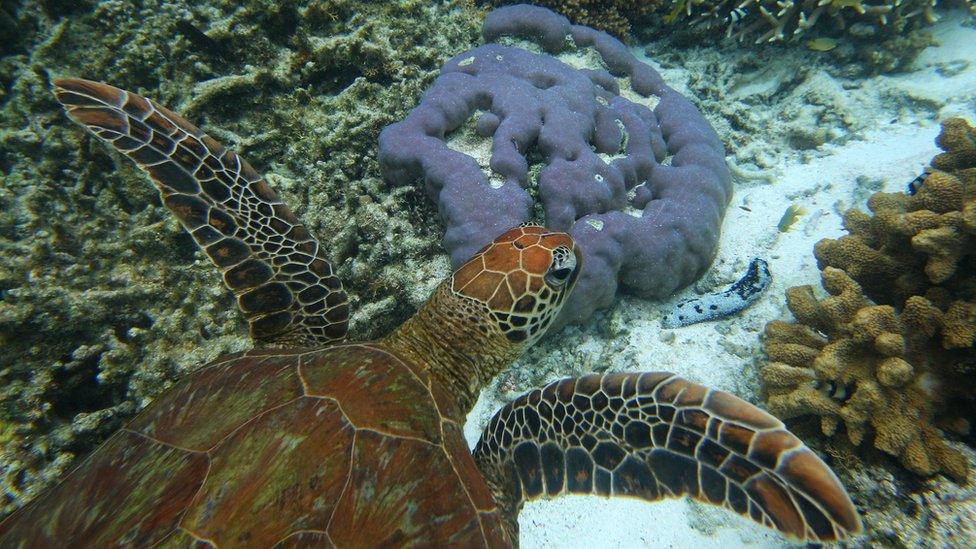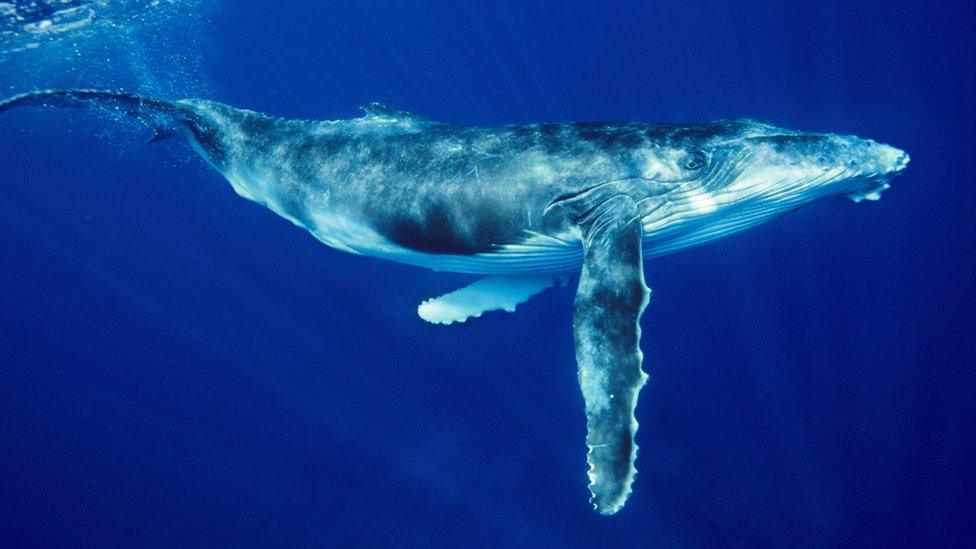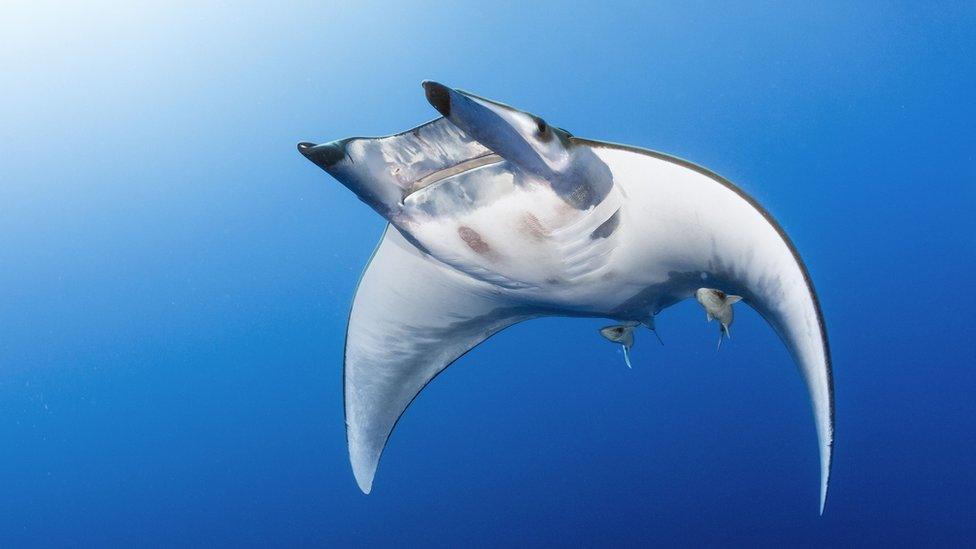Blue Planet II: What's happening in week five?
- Published
This week Blue Planet II looks at Earth's green seas.
This means you can look forward to kelp forests, mangroves, prairies of sea grass and blooms of algae.
These are some of the most competitive places in the ocean to live.
So what exactly are we going to see?
The Great Escape

This crafty octopus has to keep its wits about it to stay safe in the water!
We will be taken to the tip of Southern Africa where two great oceans, the Atlantic and Indian, meet.
Around a hundred different species of sharks live here - which means one resident, the common octopus, has had to become a great escape artist.
Not only can this octopus change the colour of its skin, it can match the textures around it.
The show features never before filmed footage of a pyjama shark trying to outsmart her opponent - cool right?
Kale forest guards

Sea-urchins' long spiny needles are enough to keep most predators away.
Off the coast of North America, the Pacific Ocean is home to some of the largest forests of kale, which are are 60 metres high.
The show features sea otters, which are on the comeback after being hunted for their thick coats in the 1800s.
The numbers of sea otters are now recovering, along with the health of kale forests.
In a filming first, the Blue Planet II team reveal floating rafts of sea otters, now numbering in their hundreds.
Heroes of the deep sea

Take a journey to the bottom of the sea, just like if you were a sea turtle.
This episode will travel all the way to Western Australia's green seas.
There the crew met turtles who are stalked by tiger sharks!
Tiger sharks keep turtles away from sea grass meadows, which mean the areas don't become too damaged.
This means sharks have become buddies in the fight against climate change - who would've thought sharks would be the good guys?
The sharks aren't the only heroes that help in protecting the kelp forests down in Australia. As soon as winter hits, spider crabs come out to help in the protection.
They march in and pile on top of each other, building 'walls' more than a metre high. They then shed their skin and now the soft-bodied, weakened spider-crabs, try their best to avoid the patrolling four-metre-long stingrays.
It's not always the size that counts...maybe

Cuttle fish move through the water using their wings, what cute little things.
Staying down-under, a little further along the coast, the most amazing of gatherings of the cuttlefish happens, as the males are on the look-out for a mate.
Remember, though, it's not always size that counts, as the smaller, sneaky males play tricks on the big boys, to confuse them and in the end get the females. With about 10 males to every female, the sneaky cuttlefish use tricks like pretending to be females to get close to the real girl cuttlefish.
Moving over to what many believe to be the best nursery for young fish - the mangrove forest.
The Blue Planet II team also come face to face with deadly shrimp. Yes, shrimp.
The mangrove forest is home to a deadly killer - 40cm long zebra mantis shrimp. These male shrimp can abandon their mate for as long as 20 years in the hunt for a larger female!
The greatest place at sea

Come face to face with humpback whales and other amazing animals beneath the waves.
In this episode, we are treated to a look at the microscopic algae.
They may not sound too exciting, but they're actually really important organisms.
The microscopic algae flourish into vast blooms, providing a feast for everything from plankton to sea-lions.
In California's Monterey Bay, thousands of dolphins, sea lions and humpback whales all race to claim their share of the feast which the algae provide.
- Published19 November 2017

- Published27 October 2017

